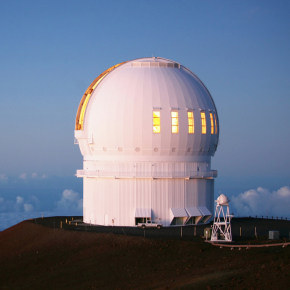The means of observation in astronomy have a major carbon footprint
The carbon footprint of research activities in astronomy-astrophysics is a growing concern for those involved in the field. Recent studies have estimated the greenhouse gas emissions associated with astronomers’ business travel and supercomputer use, concluding that significant reductions are needed to meet the commitments of the Paris Agreement on climate change. However, with a few exceptions, the studies did not cover the indirect emissions caused by the main tool of astronomy, namely observing devices such as space telescopes, planetary probes or ground-based observatories, thus hiding a significant part of the real effort that the community has to make.

A first global estimate of the carbon footprint of astronomical research facilities has just been published. Using a method that links the carbon footprint of an observatory to its construction and operating costs, the researchers were able to estimate that research infrastructures are the first item in the carbon footprint of astronomy and astrophysics research, well ahead of travel and the use of supercomputers. According to the authors, this result is clear: a drastic reduction of this footprint is necessary to make astronomy research sustainable for the environment and humanity, and compatible with the commitments of the Paris Agreement. A major effort must be made to decarbonize existing observatories, and the community must simultaneously consider how to fulfill its societal role without compromising the future of the next generations, even if it means building fewer new observatories in the future. The authors urge the entire astronomical community to pursue more accurate and systematic estimates of the carbon footprint of observing facilities, and invite communities in other research fields to follow suit. Astronomy is probably not an isolated case, and the preservation of this rare and exceptional phenomenon in the Universe that is life requires the mobilization of the entire scientific research community.
Further Resources
- Scientific article : Knödlseder, J., Brau-Nogué, S., Coriat, M., Garnier, P., Hugues, A., Martin, P., Tibaldo, L., Estimate of the carbon footprint of astronomical research infrastructures. Nat Astronomy (2022).
- Other scientific articles : The impact of astronomy on climate change (Nature Astronomy, 8 mars 2022)
- Press Review :
- Les astronomes font leur autocritique climatique (Le Temps)
- Et si l’astronomie réduisait son empreinte carbone ? (La Croix)
- Astronomy’s Environmental Toll Is Surprisingly High. But There Are Ways to Clean it Up (Time)
- Is “Slow Science” the Answer to Astronomy’s Carbon Footprint? (Sky & Telescope)
- Astronomers Tally the Growing Carbon Footprint of Space Science (Wired)
- Astronomy’s contribution to climate change rivals the emissions from some countries (NPR)
IRAP Contact
- Jürgen Knödlseder, jknodlseder@irap.omp.eu






